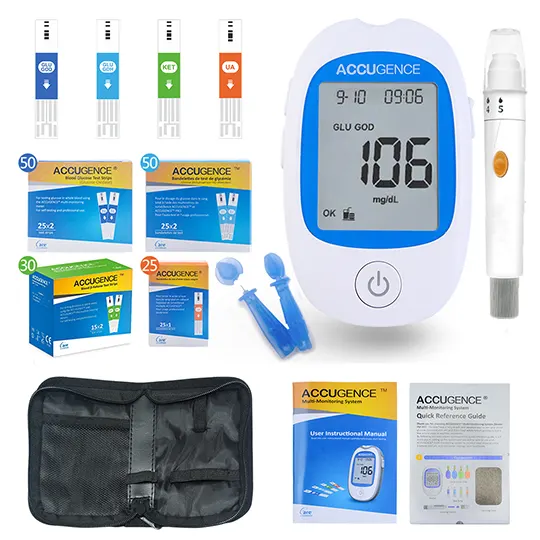Dosing and uses of Rayaldee (calcifediol)
Adult dosage forms and strengths
capsule, extended-release
- 30mcg
Hyperparathyroidism
Indicated for secondary hyperparathyroidism associated with vitamin D insufficiency in patients with stage 3 or 4 chronic kidney disease (CKD) and serum total 25-hydroxyvitamin D levels <30 ng/mL
Ensure serum calcium in <9.8 mg/dL before initiating calcifedioL
Initial: 30 mcg PO qHs
Maintenance dose should target serum total 25-hydroxyvitamin D levels to 30-100 mg/mL, intact parathyroid hormone (PTH) levels within the desired therapeutic range, serum calcium (corrected for low albumin) within the normal range, and serum phosphorus <5.5 mg/dL
Also see Administration
Dosage modifications
Increase dose
- Increase the dose to 60 mcg PO qHS after ~3 months, if intact PTH remains above the desired therapeutic range
- Prior to raising the dose, ensure serum calcium is <9.8 mg/dL, serum phosphorus is below 5.5 mg/dL, and serum total 25-hydroxyvitamin D is <100 ng/mL
Suspend dosing
- Suspend dosing if intact PTH is persistently and abnormally low to reduce the risk of adynamic bone disease, if serum calcium is consistently above the normal range to reduce the risk of hypercalcemia, or if serum total 25-hydroxyvitamin D is consistently >100 ng/mL
- Restart at a reduced dose after these laboratory values have normalized
Dosing Considerations
Monitor serum calcium, serum phosphorus, serum total 25-hydroxyvitamin D, and intact PTH levels at a minimum of 3 months after initiation of therapy or dose adjustment, and then at least every 6-12 months
Patients with a history of hypercalcemia prior to initiating therapy should be monitored more frequently for possible hypercalcemia during therapy
Limitations of use
- Not indicated for secondary hyperparathyroidism in patients with stage 5 CKD or end-stage renal disease on dialysis
Pediatric dosage forms and strengths
Safety and efficacy not established
Rayaldee (calcifediol) adverse (side) effects
>10%
Hyperphosphatemia, at least 1 episode >4.5 mg/dL (45%)
1-10%
Anemia (4.9%)
Nasopharyngitis (4.9%)
Increased blood creatinine (4.9%)
Dyspnea (4.2%)
Hypercalcemia, at least 1 episode >10.5 mg/dL (4.2%)
Cough (3.5%)
Congestive heart failure (3.5%)
Constipation (3.2%)
Bronchitis (2.8%)
Hyperkalemia (2.5%)
Osteoarthritis (2.1%)
Hyperuricemia (1.8%)
Contusion (1.8%)
Pneumonia (1.4%)
COPD (1.5%)
Warnings
Contraindications
None
Cautions
Adynamic bone disease with subsequent increased risk of fractures may develop if intact PTH levels are suppressed by calcifediol to abnormally low levels; monitor intact PTH levels and adjust calcifediol dose accordingly (see Dosage modifications)
Hypercalcemia
- Hypercalcemia may occur
- Acute hypercalcemia may increase risk of cardiac arrhythmias, and seizures and may potentiate the effect of digitalis on the heart
- Chronic hypercalcemia can lead to generalized vascular calcification and other soft-tissue calcification
- Severe hypercalcemia may require emergency attention
- Hypercalcemia may be exacerbated by concomitant administration of high doses of calcium-containing preparations, thiazide diuretics, or other vitamin D compounds
- Careful and regular monitoring of serum calcium levels is necessary
- Inform patients about the symptoms of hypercalcemia and to contact their physician if they develop; symptoms include feeling tired, difficulty thinking clearly, loss of appetite, nausea, vomiting, constipation, increased thirst, increased urination, and weight loss
Interaction overview
- Calcifediol may cause hypercalcemia, which would increase the risk of digitalis toxicity; monitor both serum calcium levels and for signs and symptoms of digitalis toxicity
- Coadministration of calcifediol and thiazide diuretics may cause hypercalcemia
- Cholestyramine may impair the absorption of calcifediol
- Phenobarbital or other anticonvulsants or other compounds that stimulate microsomal hydroxylation reduce the half-life of calcifediol
- CYP3A inhibitors
- CYP450 inhibitors may inhibit enzymes involved in vitamin D metabolism (CYP24A1 and CYP27B1)
- This may alter serum levels of calcifediol and decrease the conversion of calcifediol to calcitriol
- Dose adjustment of calcifediol may be required, and serum 25hydroxyvitamin D, intact PTH, and serum calcium concentrations should be closely monitored when initiating or discontinuing a strong CYP3A4 inhibitor
Pregnancy
Pregnancy
There are no adequate and well-controlled studies in pregnant women
Should be used during pregnancy only if the potential benefit justifies the potential risk to the fetus
Animal studies
- Calcifediol has been shown to be teratogenic in rabbits when given in doses 8-16 times the human dose of 60 mcg/day, based on body surface area
Lactation
Limited data suggest calcifediol is poorly excreted in human milk; caution if administered to a breastfeeding female
Pregnancy categories
A: Generally acceptable. Controlled studies in pregnant women show no evidence of fetal risk.
B: May be acceptable. Either animal studies show no risk but human studies not available or animal studies showed minor risks and human studies done and showed no risk.
C: Use with caution if benefits outweigh risks. Animal studies show risk and human studies not available or neither animal nor human studies done.
D: Use in LIFE-THREATENING emergencies when no safer drug available. Positive evidence of human fetal risk.
X: Do not use in pregnancy. Risks involved outweigh potential benefits. Safer alternatives exist.
NA: Information not available.
Pharmacology of Rayaldee (calcifediol)
Mechanism of action
Extended-release formulation of calcifediol (25-hydroxyvitamin D3), a prohormone of the active form of vitamin D3
Calcifediol is converted to calcitriol by CYP27B1, also called 1-alpha hydroxylase, primarily in the kidney; calcitriol binds to the vitamin D receptor in target tissues and activates vitamin D responsive pathways that result in increased intestinal absorption of calcium and phosphorus and reduced parathyroid hormone synthesis
Absorption
Steady-state: Levels of serum total 25-hydroxyvitamin D are reached after ~3 months
Distribution
Protein bound: >98%
Vd, steady-state: 8.8 L (healthy volunteers); 30.1 L (stage 4 CKD)
Metabolism
Production of calcitriol from calcifediol is catalyzed by the 1-alpha-hydroxylase enzyme, CYP27B1, located in the kidney and other tissues
CYP24A1, located in all vitamin D responsive tissues, catabolizes both calcifediol and calcitriol to inactive metabolites
Elimination
Excretion: Primarily through biliary fecal route
Administration
Oral Administration
Swallow capsule whole
Missed dose
- Instruct patients to skip a missed dose and resume taking at the next regularly scheduled time
- Do not administer an extra dose
Storage
Store at controlled room temperature (20-25°C [68-77°F]); excursions permitted to 15-30°C (59-86°F)



